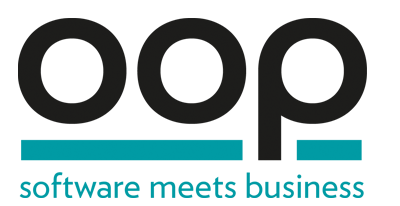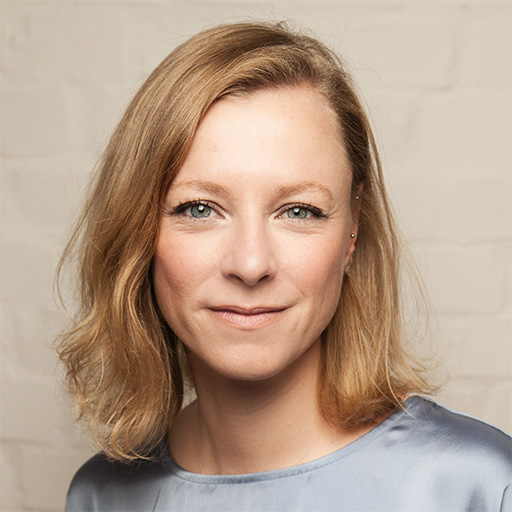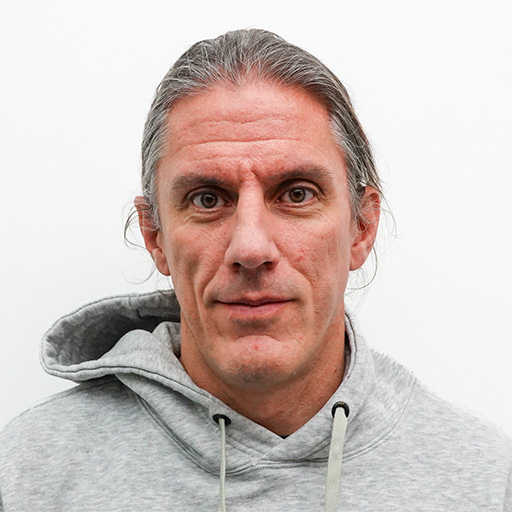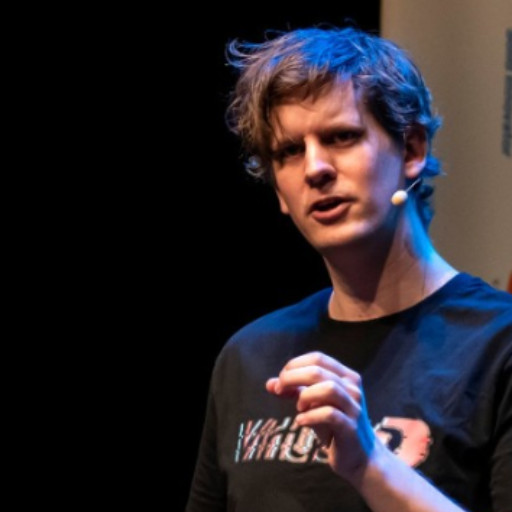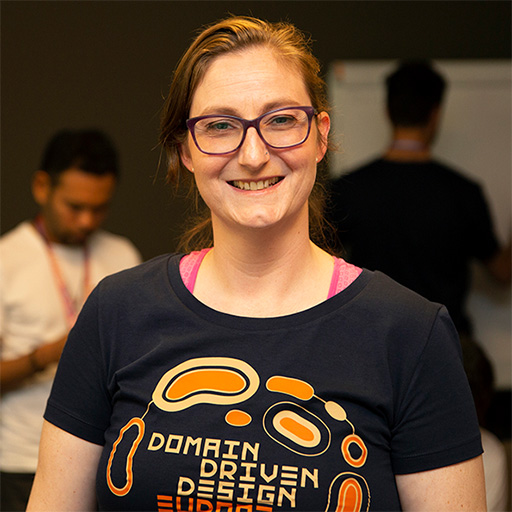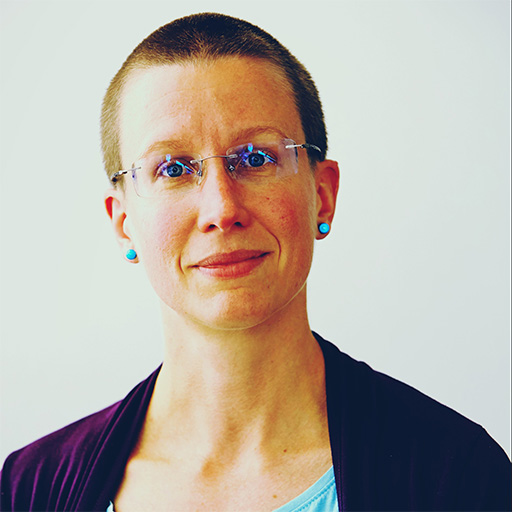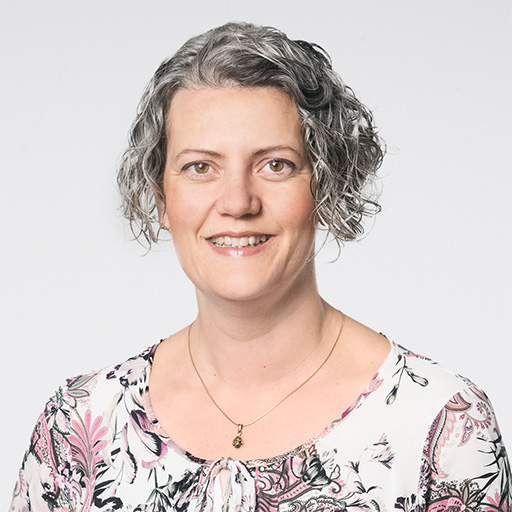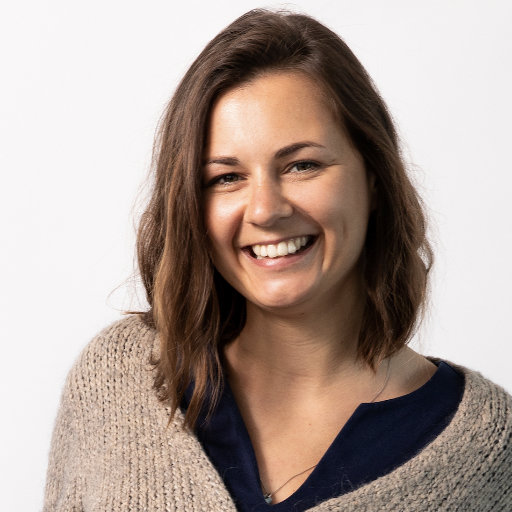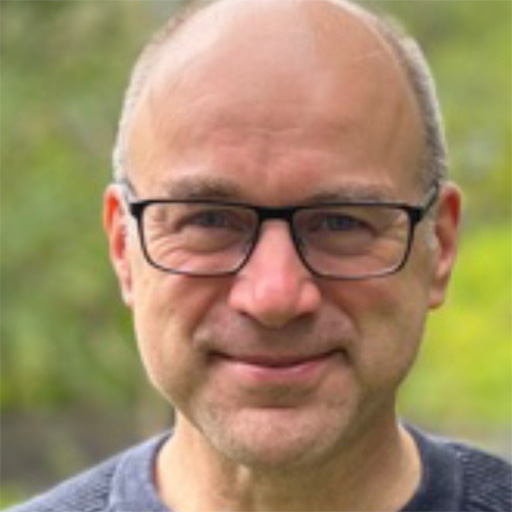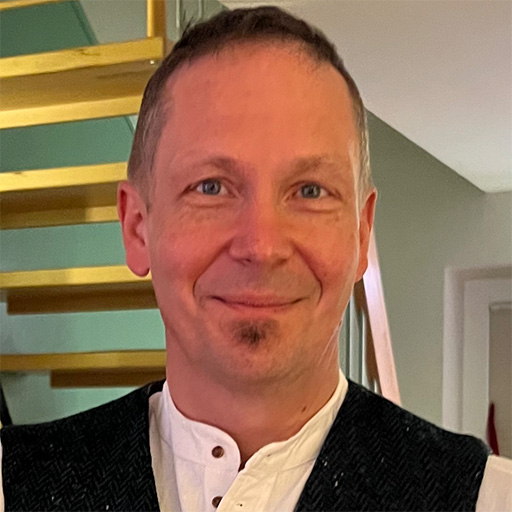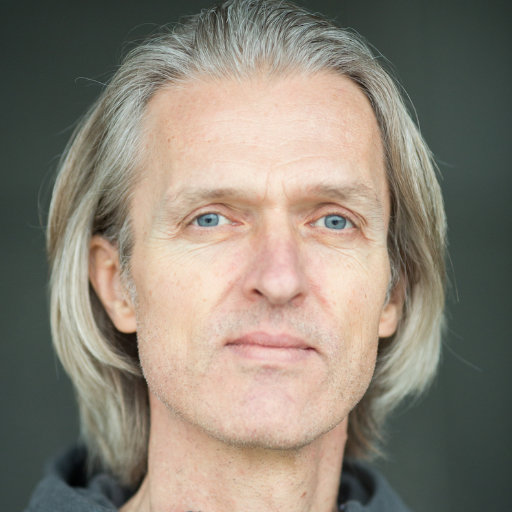Track: Software Architecture: Bridging Socio-Technical Gaps
- Dienstag
04.02. - Donnerstag
06.02.
Dynamikrobuste Softwareentwicklungsteams sind cross-funktional und fokussieren möglichst unabhängig von anderen Teams auf eine kognitiv bewältigbare (fachliche) Domäne. Um dies optimal tun zu können, benötigen sie Unterstützung von Plattform-Teams, die ihnen entlastende (Self-)Services anbieten.
Um von einem klassischen OPS-Team zu einem Plattform-Team zu werden, muss zum einen eine gewisse Kundenorientierung und Dienstleister-Mentalität etabliert werden, zum anderen braucht es ein passendes Angebot von Services und Produkten für die Entwicklungsteams. Im Optimalfall sind die Nutzung der Deployment-Plattform und die der unterstützenden Services für Entwicklungsteams freiwillig.
Welche Haltung, Rollen und Methoden es dafür braucht, beleuchten wir in diesem Vortrag.
Zielpublikum: Architekt:innen, OPS/Plattform-Teams, Führungskräfte, Menschen, die Dynamikrobustheit anstreben
Voraussetzungen: Keine
Schwierigkeitsgrad: Basic
Als Organisationsarchitektin im Bereich New Work, Selbstorganisation und (IT-)Strategie ist Kim Nena Duggen in ihrem Element, wenn sie mit Menschen arbeitet, die selbst etwas tun wollen, anstatt mit Theorie oder Musterlösungen vorliebzunehmen. Situationsgerecht wechselt sie in die Rolle der Beraterin, des Coaches oder der Trainerin – je nachdem, welche individuellen Herausforderungen mit dem Kunden passgenaue Lösungsstrategien erfordern. Erfahrungen aus Jobstationen im Prozessmanagement, als Trainerin im Bereich EAM, RE, Soft Skills, New Work und als gewählter Vorstand einer selbstorganisierten Genossenschaft sowie Weiterbildungen im Bereich Coaching und Konfliktmanagement und das Aufwachsen in zwei Kulturen haben ein breites Fundament gelegt, um sowohl extern als auch intern Organisationen zu entwickeln.
Eigentlich definiert Architektur „nur“ die Struktur der Software. Aber das Gesetz von Conway weist schon auf den Zusammenhang zwischen Architektur und Organisation hin. Durch das Inverse Conway Maneuvre ist klar geworden, dass die geschickte Aufstellung der Organisation die Architektur maßgeblich beeinflussen kann.
Dieser Vortrag zeigt auf, dass Team Topologies auch erhebliche Konsequenzen für die Architektur-Arbeit hat: Team Topologies fungiert nicht nur als Werkzeug für Architektur, sondern muss auch in die architektonische Planung einbezogen werden.
Zielpublikum: An Softwarearchitektur und Organisation Interessierte
Voraussetzungen: Grundlegendes Verständnis von Softwarearchitektur und Entwicklung im Team
Schwierigkeitsgrad: Basic
Eberhard Wolff ist Head of Architecture bei SWAGLab und arbeitet seit mehr als zwanzig Jahren als Architekt und Berater, oft an der Schnittstelle zwischen Geschäft und Technologie. Er ist Autor zahlreicher Artikel und Bücher, u. a. zu Microservices, trägt regelmäßig als Sprecher auf internationalen Konferenzen vor und streamt wöchentlich zum Thema Softwarearchitektur. Sein technologischer Schwerpunkt sind moderne Architektur- und Entwicklungsansätze wie Cloud, Domain-driven Design und Microservices.
Mehr Inhalte dieses Speakers? Schaut doch mal bei sigs.de vorbei: https://www.sigs.de/experten/eberhard-wolff/
Vortrag Teilen
Vortrag Teilen
If you have worked in the software industry for a while, you’ll have a hunch that technical skills are often not what stands between us and our success. Around software systems, there are always complex human systems, whose runtime dynamics seems full of fixes that don’t work. As software professionals, can we just tell jokes about SAFe, about being able to copy the Spotify Model, but not paste it? Or should we give the usual shrug – “it’s the system’s fault”?
Xin has been a design and architecture practitioner for more than a decade. Drawing on her own developmental journey, Xin makes a case for the rising relevance of sociotechnical design in a post-modern world, where aging companies struggle with aging software, while adding new software and complexity to their IT portfolio.
This talk weaves together experience reports that illustrate different facets of complexity in software and human systems. It highlights the sociotechnical principles and practices that lie at the center of Domain-Driven Design (DDD) and adjacent practices such as Systems Thinking and Constraints Framework.
From a systems standpoint, we are part of the same mess. If we can become better at seeing and naming the elephants in the room, not as random events, but as systemic patterns described through a consistent systems language, then the current messy reality is no longer our enemy but our ally. It can become a generative force for us to identify leverage and sustain influence, making better impact with our craft.
Join Xin to reflect together on, how we can leverage a multi-dimensional, sociotechnical design toolbox to help us see the system, share the system, and build the system in a reality of vast complexity and constant change.
Target Audience: Architects, Developers, Product Professionals, Engineering Managers, UX Designers
Prerequisites: Prior knowledge of Domain-Driven Design is beneficial for in-depth understanding but not a must
Level: Expert
DDD Consultant, Sociotechnical Architect & Advocate of Systems Thinking
Xin Yao is an independent consultant specialized in Domain-Driven Design (DDD), Sociotechnical Architecture and Systems Leadership. She frequently speaks at international design and architecture conferences. In her earlier career, Xin has been chief architect in Danske Bank, spearheading large-scale change initiatives. An experienced architect and an avid change agent, Xin nudges organizations at crossroads to move beyond seeing architecture as an upfront design blueprint. She is deeply committed to collective reasoning, participatory discovery and systems leadership. Xin facilitates languaging, modeling and reflective conversations to help teams and organisations make sense, make decisions and make intuitive business software.
Creating high-quality software is challenging due to a focus on solutions over understanding organizational context. Developers need to engage with stakeholders across contexts. However, stakeholder communication can lead to misunderstandings and conflicts, disrupting knowledge sharing. This often results in autocratic decisions by architects. Achieving sustainable and design decisions, it's more effective to employ visual techniques, improving collaboration with stakeholders.
This talk explores collaborative modeling, a technique for analyzing complex decisions with all stakeholders. Inclusive sessions and skills like observing, listening, neutrality, and empathy are key. The goal is for teams to understand stakeholder needs, guiding software architecture through collaborative design.
Target Audience: Technical leaders, decision makers, software engineers, architects
Prerequisites: None
Level: Advanced
Kenny Baas-Schwegler believes in collaborative software design where ‘every voice shapes the software’. Leveraging a domain-driven design approach with Team Topologies, he facilitates clearer communication between stakeholders and software creators by collaborative modelling and deep democracy, decoding complexities, resolving conflicts and ensuring software remains agile to business demands.
In his roles as an independent software consultant, tech lead, and software architect, he catalyses organisations and teams towards designing and building sustainable and resilient software architectures.
Gien Verschatse is an experienced consultant and software engineer that specialises in domain modelling and software architecture. She's fluent in both object-oriented and functional programming, mostly in .NET. As a Domain-Driven Design practitioner, she always looks to bridge the gaps between experts, users, and engineers.
As a side interest, she's researching the science of decision-making strategies, to help teams improve how they make technical and organisational decisions. She shares her knowledge by speaking and teaching at international conferences.
And when she is not doing all that, you'll find her on the sofa, reading a book and sipping coffee.
Vortrag Teilen
Disclosure - this is a talk about people - not about AI. This is a talk about how we will continue to apply our humans strenghts in a world enhanced by AI.
One of the LLM engines I work with seems to think it can take over my job as an architect. I say with some confidence that for the next few decades, my job will be heavily influenced by AI, but not replaced by AI. For example I am presenting and OOP and *it* is not.
Software architects and system architects will not be replaced anytime soon by Generative AI or LLMs. They will be replaced by software architects that know how to leverage Generative AI and LLMs, and just as importantly, know how NOT to use Gen AI. For the last two years, Avraham has been on a journey exploring the use of AI to augment the way he does architecture and makes architecture decisions as well as assimilate the architectural understanding within the organization.
Along the way, Avraham has learned so much both about generative AI's abilities and limitations, and even more about himself as an architect and as a person. For example, Avraham has learned that AIs can propose tradeoffs along with convincing suppporting arguments, but only a human Architect can be held accountable. An AI might be able to create a drawing and talk you through it, but only a human architect will appriciate the look of confusion on your face and emphasize that one dotted line that makes everything clearer.
In the talk, Avraham invites you to join him on his journey. This talk will equip you with the knowledge and very practical tools to start on your own adventure to leverage the power of GAI, elevate your architectural practice, and hopefully stay ahead of the curve.
Target Audience: Software Architects, Developers, Decision Makers
Prerequisites: Basic Curiosity about AI and machine learning
Level: Advanced
Avraham Poupko is the head of Product Security for Forescout. He learns and teaches about how people join to create software.
As a systems architect, Avraham Poupko has spent the last 25 years analysing, modeling and designing software as well as teaching systems thinking and system design. Avraham experience varies from working with small startups that have one product, to large enterprises that create very complex domains and systems. Avraham is currently leading a multi disciplined team that is designing the next generation data center.
Avraham is currently studying, writing and teaching about the varied and complex relationships between the organizations that create software and the software they create.
Vortrag Teilen
Architecture work can be tough: juggling tech stacks, new tools, facilitating decisions, working with different stakeholders & even some organisational development. Herding cats is easier, isn’t it?
With Architecture in ACTion, I introduce you to decades of practical science on the Human Mind. We’ll dig into Psychological Flexibility and ACT - concepts that are (still) rarely used in biz but have huge impact at work!
Because: Deep tech expertise, domain navigation *and* change skills is a lot!
You'll leave this session with:
- practical, low-tech tools for effective operational work as architects
- a reflection canvas for laser-focussed strategic work as tech leaders
- digestible science bits on Human Mind and Behaviour
- (hopefully!) a desire to learn more about your “thinking machine”
Target Audience: Software Architects, (Technical) Leaders, curious humans in IT who work with other humans (in IT)
Prerequisites: Some work/project experience and openness for new ways of thinking (and potentially behaviour)
Level: Basic
Cosima Laube is an independent leadership coach and socio-technical consultant with experience e.g. in automotive, finance, healthcare and the public sector.
Building on a strong foundation as technical and people lead in IT, she enhanced her portfolio with solid coaching skills (ICF-PCC) and Psychology (BSc.).
Cosima cares more about systems thinking than local optimization, she is an introvert, a runner and a passionate community "gardener".
Her credo is: respect & adapt to achieve more TOGETHER!
Code that is well-designed and easy to understand is cheaper to extend and modify - so you can deliver more value, sooner. Many organizations struggle with older codebases that use outdated designs and have too much cruft.
I found that the technical coaching I was doing was addressing those kinds of issues successfully, but it was slow to scale up to large projects where there are tens of teams of developers working on different parts of the same codebase.
Recently I’ve been using a complementary approach. The basic idea is regular, short interactive training for teams of developers, led by a peer. They use high quality materials and content I’ve designed. In this talk I will explain what I’ve found and how you could adapt my ideas and materials for your situation.
Target Audience: Tech lead, senior dev, architect
Prerequisites: Experience writing code in a development team (even if it was a while ago)
Level: Advanced
Emily Bache is an independent consultant, YouTuber and Technical Coach. She works with developers, training and coaching effective agile practices like Refactoring and Test-Driven Development. Emily has worked with software development for 25 years, written two books and teaches courses on platforms including Pluralsight and O'Reilly. A frequent conference speaker, Emily has been invited to keynote at prestigious developer events including EuroPython, Craft and ACCU. Emily founded the Samman Technical Coaching Society in order to promote technical excellence and support coaches everywhere.
LinkedIn: https://www.linkedin.com/in/emilybache/
Mastodon: https://sw-development-is.social/web/@emilybache
GitHub: https://github.com/emilybache
Website: http://bacheconsulting.com/
YouTube: https://www.youtube.com/@EmilyBache-tech-coach
Vortrag Teilen
Vortrag Teilen
The Japanese philosophy of Wabi-Sabi celebrates the beauty of imperfection. I will explore how applying such principles to software engineering projects can enhance the outcomes. Using the relaunch of my client's content-driven website as a case study, I will demonstrate how an open and positive attitude, combined with flexibility and a readiness to embrace unconventional methods, has led to better results. The aim of this talk is to enable project team members to confidently navigate the complexities of IT projects, from greenfield beginnings to setting standards around aspects like accessibility, design-to-code, and testing.
Target Audience: Architects, Developers, Project Leaders, Managers, Decision Makers
Prerequisites: Basic knowledge in web development
Level: Basic
During her studies Eileen Fürstenau discovered her enthusiasm for technology, innovation and programming. After a few years in larger corporations such as Continental and IBM, she moved to the IT service provider MaibornWolff. Today, she works there as a software engineer in agile teams designing various digital products.
Vortrag Teilen
In der modernen Unternehmensarchitektur ist eine enge Zusammenarbeit zwischen IT-Demand und IT-Supplier essenziell, um reibungslose Abläufe und nachhaltigen Erfolg zu gewährleisten. Dieser Beitrag untersucht die Spannungsfelder zwischen IT-Demand und IT-Supplier, die oft durch Unwissenheit und mangelnde Feldkompetenz entstehen. Solche Herausforderungen können zu erheblichen Strömungsabrissen führen, die den Projekterfolg gefährden.Um diese Risiken zu minimieren, werden pragmatische Kooperationsmodelle vorgestellt, die auf der Definition gemeinsamer Architektur Artefakte basieren. Transparenz in der Zielsetzung sowie ein effektives Stakeholdermanagement sind entscheidend für den Erfolg der Zusammenarbeit. Der Beitrag bietet praxisnahe Lösungsansätze und Handlungsempfehlungen.
Zielpublikum: Manager, Entscheider, Projektleiter, Architekten
Voraussetzungen: Projekterfahrung, Fachkenntnisse, agile Methoden, Architektur
Schwierigkeitsgrad: Basic
Stefan Hartig ist der Leiter der Solution Architecten im CIO der DB Fernverkehr AG . Er verantwortet die Lösungsarchitekturen für die IT-Vorhaben der DB Fernverkehr AG und stellt die Architektur-Governance in IT-Vorhaben sicher. Sein Schwerpunkt liegt in der Entwicklung von Architekturmethoden und -standards.
Christian Fischer ist Principal Software Engineer bei der DB Systel GmbH. Er unterstützt dort DevOps-Teams bei der Weiterentwicklung und dem Betrieb geschäftskritischer Applikationen. Sein methodischer Schwerpunkt liegt dabei auf dem Domain-Driven Design.
Resilience is an important issue these days. Many companies claim to have a resilient IT, very few have one.
What does it mean to be resilient? How do I get there? How can I figure out where I currently am? How can I improve?
We will look at several gradations of becoming resilient. We will examine their properties and tradeoffs and how to get there. We will discuss what we can achieve at an IT system level and when we need to address the whole socio-technical system.
At the end of the session, we will have drawn a map from here to resilience you can use as a travel guide towards your resilient IT.
Target Audience: IT architects, lead devs, decision makers
Prerequisites: Broad knowledge of IT-related topics (we will travel from the engine room to the penthouse)
Level: Advanced
Uwe Friedrichsen. Langjähriger Reisender in der IT. Dot Connector. Kartograph unbekannter Gebiete. Bewahrer zeitlosen Wissens. Vermittler zwischen den Welten. Systemdesign. Resilienz. Nachhaltigkeit. Mag keine langen Biografien. Versucht, die IT (ein wenig) besser zu machen. CTO @ codecentric.
Mehr Inhalte dieses Speakers? Schaut doch mal bei sigs.de vorbei: https://www.sigs.de/experten/uwe-friedrichsen/
